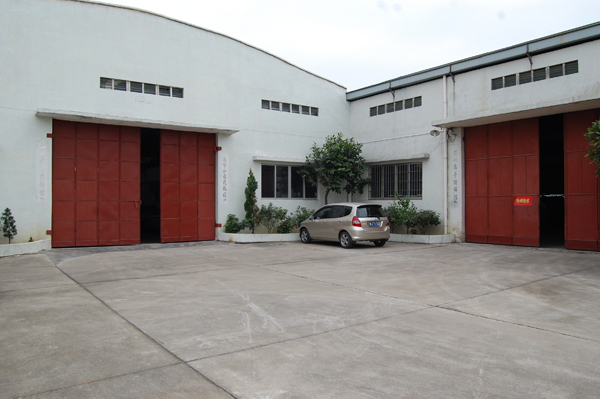What are the types of stainless steel?
1. Ferritic stainless steel: chromium content 12% ~ 30%. Its corrosion resistance, resistance and weldability are improved with the addition of chromium content, and its chloride stress corrosion resistance is better than other kinds of stainless steel. Crl7, cr17mo2ti, Cr25, cr25mo3ti, Cr28, etc. belong to this category. Ferritic stainless steel has good corrosion resistance and oxidation resistance due to its high chromium content, but poor mechanical and process functions. It is mostly used in acid resistant structure with little stress and as oxidation steel. This kind of steel can resist the corrosion of atmosphere, nitric acid and brine solution, and has the characteristics of good high-temperature oxidation function and low coefficient of thermal expansion. It is used for nitric acid and food factory equipment, and can also manufacture parts working at high temperature, such as gas turbine parts.
2. Austenitic stainless steel: it contains more than 18% chromium, about 8% nickel and a small amount of molybdenum, titanium, nitrogen and other elements. It has good comprehensive function and can resist the corrosion of a variety of media. Common grades of austenitic stainless steel include 1Cr18Ni9, 0Cr19Ni9, etc. WC of 0Cr19Ni9 steel is less than 0.08%, and it is marked as "0" in the steel grade. This kind of steel contains a lot of Ni and Cr, which makes the steel austenitic at room temperature. This kind of steel has excellent plasticity, resistance, weldability and corrosion resistance. It has good corrosion resistance in oxidizing and reducing media. It is used to manufacture acid resistant equipment, such as corrosion-resistant containers and equipment linings, transportation pipelines, nitric acid resistant equipment parts, etc. Austenitic stainless steel is generally treated by solid solution, that is, the steel is heated to 1050 ~ 1150 ℃ and then cooled by water to obtain single-phase austenite.

3. AUSTENITIC FERRITIC duplex stainless steel: it has the advantages of both austenitic and ferritic stainless steel, and has superplasticity. Austenitic and ferritic arrangements each account for about half of stainless steel. When the content of C is low, the content of Cr is 18% ~ 28%, and the content of Ni is 3% ~ 10%. Some steels also contain Mo, Cu, Si, Nb, Ti, N and other alloy elements. This kind of steel has the characteristics of both austenitic and ferritic stainless steel. Compared with ferrite, it has higher plasticity and resistance, no room temperature brittleness, significantly improved intergranular corrosion resistance and welding function. At the same time, it also maintains the 475 ℃ brittleness, high thermal conductivity and Superplasticity of ferritic stainless steel. Compared with austenitic stainless steel, it has high strength and significantly improved resistance to intergranular corrosion and chloride stress corrosion. Duplex stainless steel has excellent pitting corrosion resistance and is also a nickel saving stainless steel.
4. Martensitic stainless steel: high strength, but poor plasticity and weldability. The commonly used grades of martensitic stainless steel are 1Cr13, 3Cr13, etc. due to high carbon content, it has high strength, hardness and wear resistance, but the corrosion resistance is slightly poor. It is used for some parts with high mechanical function requirements and general corrosion resistance function requirements, such as tension spring, steam turbine blade, hydraulic press valve, etc. This kind of steel is used after quenching and tempering.
5. Precipitation hardening stainless steel: the matrix is arranged as austenite or martensite. The common brands of precipitation hardening stainless steel include 04cr13ni8mo2al, etc. It is a stainless steel that can be hardened (strengthened) by precipitation hardening (also known as age hardening).
Article from:http://www.jmdasheng-steel.com/
-
10-27
Why can't stainless steel pipes be stacked with carbon steel pipes?
Strictly speaking, stainless steel pipes and carbon steel pipes cannot be stacked together, because the data of carbon steel pipes and stainless steel pipes are different. In a humid environment, it is assumed that it is very simple to stack carbon steel pipes and stainless steel pipes together,
-
10-27
What are the methods of backing welding of stainless steel pipe?
Several methods for selection of stainless steel backing weldingTIG process is generally used for stainless steel backing welding. According to the actual situation on site, we can choose the following four methods for backing welding.① The method of sealing and ventilation maintenance
-
10-27
How to check the missing welding of stainless steel?
Missed welding generally refers to the solder joint without welding in the welding process. It is very simple to form a quality accident. The real cause of missing welding is difficult to find, and the entry point to solve the problem is not clear. The preventive measures can only strengthen sel
-
10-27
What are the uses of stainless steel pipes?
Steel pipe is a kind of economical section steel and an important in the steel industry. It can be widely used in life decoration and industry. Many people in the world are used to make stair handrails, window guards, railings, furniture, etc. There are two common materials, 201 and 304.It i